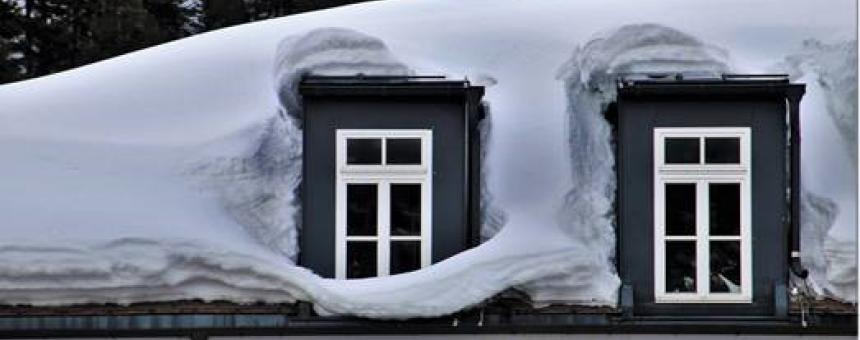Snow Woes

Even after the sun comes out, snow can wreak havoc.
Living up north, we get used to a lot of snow, but homeowners can all use a refresher about some aspects of snowfall — or a short bit of advice if you’re a first-time homeowner. Roof collapses, ice dams and damage from snowmelt are three of the costliest losses homeowners experience from heavy snowfall. But there are ways to avoid serious damage to your home and the inconvenience that comes with that.
Roof Collapse. The weight of snow can cause even healthy roofs to give way, but flat, low-pitched and worn roofs are at much greater risk. A healthy residential roof should be able to support 20 lbs. of snow per square foot before becoming stressed, according to the Institute for Business and Home Safety, which notes that, in some northern areas, builders construct roofs for greater strength. Your local building codes or permitting office can tell you what the load standards were at the time your home was built. Here are some depth guidelines from IBHS that might help you determine when you need to get snow off your roof:
- Fresh snow: 10-12 inches of fresh snow is about five pounds per square foot. That means four feet of snow depth would cause stress.
- Packed snow: 3-5 inches of old snow equals about five pounds per square foot. That puts your stress benchmark at two feet of snow depth.
- Accumulated weight: What if you have old snow not fully melted away and another storm comes through? If you had a foot leftover and you got another foot, you’d be at or near your stress benchmark, and it would be time to call a professional for snow removal. Remember, if you go up there and stand on the roof, you are adding a lot of weight in a small spot. Professionals use cherry pickers or other crane-like machinery to reach the roof.
- Ice: One inch of ice equals one foot of fresh snow, or five pounds per square foot. Do you have snow that has melted in the day and refrozen overnight sitting underneath packed snow?
Ice Dams. Heat emanating from your top floor or attic will melt the lowest layer of snow on your roof, but if your gutters are full of snow or ice, that water could back up into your eaves — or, worse, your walls or ceilings — and create interior water or mold damage. The only way to prevent ice dams is to properly insulate your roof so it stays cold at the surface and snow melts from the top or evaporates. Proper attic or top-floor ventilation is also important so cold air can get in and any heated air can escape. If you already have an ice dam, there are pros who will come steam the dam to melt it, which is much safer than many home remedies you may read about. There are products, such as ice melt, that can be found in granular or tablet form that can be placed on lower-roof dams, but getting them accurately placed from a window is a challenge. Using a ladder in bad weather conditions is definitely not a good option, so consider the services of a professional.
Snowmelt. Once the snows are melting, you may have new concerns other than ice dams. Soggy soil around house foundations and under slabs can, if left that way for extended periods, cause instability and shifting of the home or parts of it. Such shifting or sinking, called subsidence, is not covered by standard homeowners insurance. The key is to make sure your yard is graded away from the home so the slope encourages water to run away from the house. If you have significant snow up against the foundation or slab, shovel it away. And don’t forget about the effects of large quantities of local snow melting in a short period of time or being rinsed off by rain. This can cause flooding, which is also not covered under a homeowners policy. Even if you don’t live in a high-risk flood zone, you could see waters from creeks, swales or other water easements rise quickly and threateningly.
You usually can add coverage to your homeowners insurance for earth movement and flood, so talk to your Trusted Choice® Independent Insurance Agent about your options. Repairing a foundation can run thousands of dollars. Insuring against it and taking preventive measures can go a long way in protecting you from hefty financial losses.
